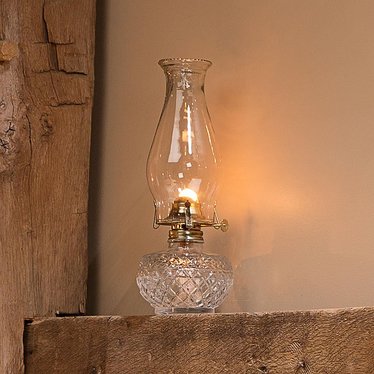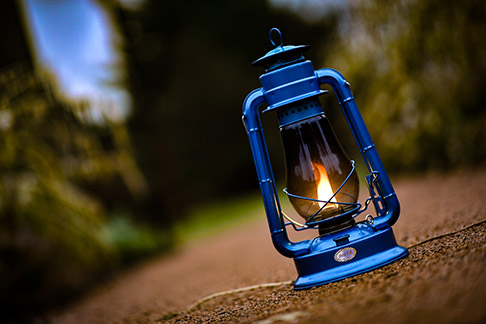Living simply begins with making sustainable choices, from the food you eat to the light you use. A staple in our Amish community, oil lamps and lanterns are a dependable, sustainable source of light that never need an outlet. It’s no wonder that after all these years, folks around the world still use them – from remote, off-the-grid areas to suburban power outages.
But in a modern world where flipping a switch for light is the norm, we understand how using non-electric lighting can be a new experience for some people. Here are our simple tips, straight from Lehman’s lighting experts, on how to best use an oil lamp.
1. Don’t fill your oil lamp completely.
Oil expands during burning, so don’t fill your lamp to the top. We recommend filling to about 1/2″ below the filler cap. This will help prevent the fuel from dripping out when in use.
2. Keep fuel in your lamp.

To get maximum light and to prevent your wick from drying out, keep the lamp font more than half full of lamp oil.
3. How you store your lamp oil affects its shelf life.
Always keep the lamp oil in a clean container, away from sunlight and at room temperature for maximum shelf life. Aladdin lamp oil is smokeless and odorless and will last for years when stored in a cool, dry place.
4. Keep your wicks trimmed evenly.
We recommend trimming your wicks each time you refill the font with oil. (Helpful Hint: If your lamp is smoking, the wick is either set too high or needs to be trimmed.)
5. Never leave a lit lamp unattended.
It doesn’t matter how many times you use an oil lamp. It is still a flame light and treating it with care and caution is always best.
First time using an oil lamp or lantern? Watch our how-to videos below.
And one final thought – non-electric lighting, like oil lamps and lanterns, do provide some heat, a great advantage for chilly days.
Editor’s Note: This post was originally published in January 2019.

–Christopher, Lehman’s customer (Photo courtesy of Christopher)



































But how do you clean the enclosed glass part, please
What tool is best for trimming the wick? A post on wick maintenance would be wonderful.
I have many oil lanterns and enjoy them as an alternative from electricity.
You mention that a wick needs about an hour to absorb the fuel before one should light it. But what if I fill the lantern then wait several hours or days before lighting–do I risk having the fuel evaporate?
Thank you for the information.
MY HUSBAND BROUGHT HOME SOME OLD LANTERNS LIKE THIS WITH VERY BLACKENED GLOBES, AMONG OTHER PARTS. I CAN’T FIGURE OUT HOW TO REMOVE THE GLOBES FOR PROPER CLEANING, OR THE WICKS TO CHECK THEIR LENGTH, IF ANY ARE THERE. DO YOU HAVE A HOW-TO CLEAN VIDEO FOR THIS TYPE OF LANTERN? I THINK IT WOULD BE WONDERFUL IF YOU DID! I DECIDED TO TRY USING THESE LANTERNS BECAUSE THERE’S MORE PROTECTION FOR THE GLOBE. MY BRAND NEW CHAMBER OIL LAMP BROKE IN THE MOVE 2 MONTHS AGO, AND I NEVER GOT THE CHANCE TO EVEN TAKE IT OUT OF THE ORIGINAL PACKAGE WHEN I BOUGHT IT! ?
Do oil lamps and/or lanterns produce any harmful gasses?
I don’t get it. I see questions, but no answers.